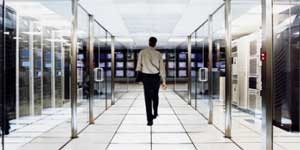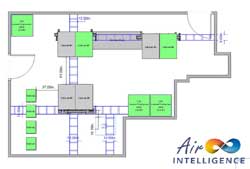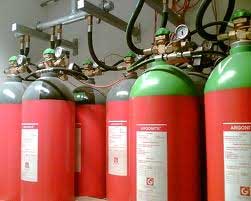Computer Room Air conditioning / Server Room Design & Build
For Berkshire – Buckinghamshire – Hertfordshire – Hampshire – Oxfordshire – Middlesex – Surrey
 At Air Intelligence, computer room design and construction is one of our specialities. However big or small, and regardless of your building limitations, our specialist design team will find the right solution for your server room. This will incorporate high specification computer room air conditioning with latest energy saving features, fire protection systems and power management. All this at very competitive prices and installed to meet or surpass manufacturers’ recommended installation requirements.
At Air Intelligence, computer room design and construction is one of our specialities. However big or small, and regardless of your building limitations, our specialist design team will find the right solution for your server room. This will incorporate high specification computer room air conditioning with latest energy saving features, fire protection systems and power management. All this at very competitive prices and installed to meet or surpass manufacturers’ recommended installation requirements.
As part of our quotation and site inspection, we will help you consider the main computer room design criteria:
Location – Air Conditioning – Fire Protection – Power – Redundancy – Future Proofing
Computer room location and design:
Computer or server room location is the first consideration, before even considering the layout of the room’s contents. Most designers agree that, where possible, the computer room should not be built where one of its walls is an exterior wall of the building. Exterior walls can often be quite damp and can contain water pipes that could burst and drench the equipment.
 Certainly avoid exterior windows that will not only be a security risk, but also be susceptible to breakages. Also, try to avoid both the top floors and basements that may be prone to flooding or leaks in the case of roofs. If a centralised server room is not feasible, server closets on each floor may be an option. This is where computer, network and phone equipment are housed in closets and each closet is stacked above each other on the floor that they service.
Certainly avoid exterior windows that will not only be a security risk, but also be susceptible to breakages. Also, try to avoid both the top floors and basements that may be prone to flooding or leaks in the case of roofs. If a centralised server room is not feasible, server closets on each floor may be an option. This is where computer, network and phone equipment are housed in closets and each closet is stacked above each other on the floor that they service.
In addition to the hazards of exterior walls, you need to evaluate any potential sources of interference in close to the server room. Check if there are radio transmitters in close proximity and what about electrical interference from power plants or lift rooms etc.
Other design considerations range from room size, door sizes and access ramps (to get equipment in and out) to cable organisation, physical security and maintenance access.
Computer Room Air Conditioning:
Air conditioning your computer room is the next major consideration. This is partly due to the sensitivity of computer equipment to heat, humidity and dust, but also for the need for very high resilience and fail over requirements. Maintaining a stable temperature and humidity within tight tolerances is critical to the IT systems reliability.
In most server rooms we install “close control air conditioning” systems or you might hear them referred to as PAC (Precision Air Conditioning) systems. These systems control temperature, humidity and particle filtration, but most of all they operate within tight tolerances 24 hours a day and can be remotely monitored. They also and have built in automatic alerts when conditions within the room move outside defined tolerances.
Air conditioning designs for most computer or server rooms will vary depending on various design consideration, but they general fit into two types “up-flow” and “down-flow” configurations.
Up-flow air conditioning This type of air conditioning draws air into the front and underneath the air handling unit (AHU), cools the air over the heat exchanger, then distributes the cooled air out through a discharge plenum or through duct work.This air conditioning configuration is well suited to retro fitted server rooms when raised floors are either of inadequate depth or don’t exist at all.
Down-flow Air Conditioning Typically, this type of air conditioning unit draws the air into the top of the air handling unit, cools the air over the heat exchanger, then distributes the air out of the bottom into the floor void. This conditioned air is then discharged into the server room via strategically placed floor grilles and onwards to equipment racks. These systems are well suited to new office buildings where the design can encompass raised floors suitable for ducting to computer racks.
Direct Expansion (DX) Air Conditioning This type of air conditioning is well suited to small and medium sized rooms. It has lower initial installation costs and is very scalable as and when further cooling capacity is required. A further benefit DX air conditioning is that each air handling and condenser unit comprises of a self contained cooling unit. So a fault in a pump or within a section of pipework will not affect other air handling units. Thus providing the resilience of the facility. DX air conditioning is less suited to large computer rooms or data centres because of the need to employ the large number of pipe runs for this type of system.
Chilled Water Air Conditioning Chilled water air conditioning is better suited to larger server rooms and data centres as it requires reduced pipe runs and therefore greater efficiency compared to DX air conditioning.Chilled water air conditioning systems do require a greater initial investment due to the nature of this pipework and the requirement of a pump room and associated equipment.
As well as the air conditioning type and configuration we also need to determine how much cooling capacity is needed. Cooling capacity is proportional to the heat generated by your server room equipment. A common mistake is to over specify the requirements and if you add up the tags on the back of the power supplies to do this, you are probably working in overkill mode. The numbers on the tags are always the worst case and vary depending on the manufacturer. Chances are, you’re really only using about 1/3-1/2 that amount.Depending on the size of your computer room we can help design the right sort of cooling technology:
Computer Room Fire Protection:
The fire protection system’s main goal should be to detect and alert of fire in the early stages, then bring fire under control without disrupting the flow of business and without threatening the personnel in the facility.
 Server room fire suppression technology has been around for as long as there have been server rooms. Traditionally, most computer rooms used Halon gas, but this has been shown to be environmentally unfriendly (ozone depleting) and unsafe for humans.
Server room fire suppression technology has been around for as long as there have been server rooms. Traditionally, most computer rooms used Halon gas, but this has been shown to be environmentally unfriendly (ozone depleting) and unsafe for humans.
These days, more advanced solutions such as inert gasesare used such as Nitrogen, a mixture of two such as IG55 or three gases namely Nitrogen, Argon and CO2 which is called Inergen (IG541). As an alternative to Inert Gas systems such as Hypoxic Air work on the basis of keeping the Oxygen content down below 15% by volume to ensure that a fire cannot even start. Therefore no damage can occur and is even more of an active solution than detecting fire and then putting it out.
FM200 is the most widely replacement for Halon (and works in a similar way) and is used across the world to protect Server Rooms and Data Centres. It is relatively inexpensive, effective and readily available.
Server Room Future Proofing:
The one thing we know about server rooms is that the demands on them are constantly changing. Whatever the requirements of your computer room are today, next month or next year they will be different. So, an essential part of computer room design is future proofing such that new requirements can be accommodated with minimal effort.
As your computing requirements grow, so will your cooling requirements. As a rough guide, for every additional 100kW of equipment installed, a further 30kW of energy is required to cool it. So our air conditioning designs will have scalability designed in from the outset, so as your business grows, increased capacity can be quickly added at minimal cost.
Your choice of racks in a server room is usually the prime factor when determining space. Space is expensive and you want to get the best possible return on your investment. Many organisations use telco racks or enclosed cabinets to make the most of the space they have. Today, with 1U high servers and new blade servers, you can pack anywhere from 42 to hundreds of servers in a single rack.
Air Conditioning redundancy
Depending on the critically of your systems, removing single points of failure in a computer room will be of high importance. Can your business tolerate interruption whilst failover systems are activated or must they be seamless without any business impacts. Other than computer hardware redundancy, the main consideration here is the provision of failover cooling. A number of options can be designed into your computer room and we can make recommendations for n+1 (or even 1+1) redundancy depending business requirements.




